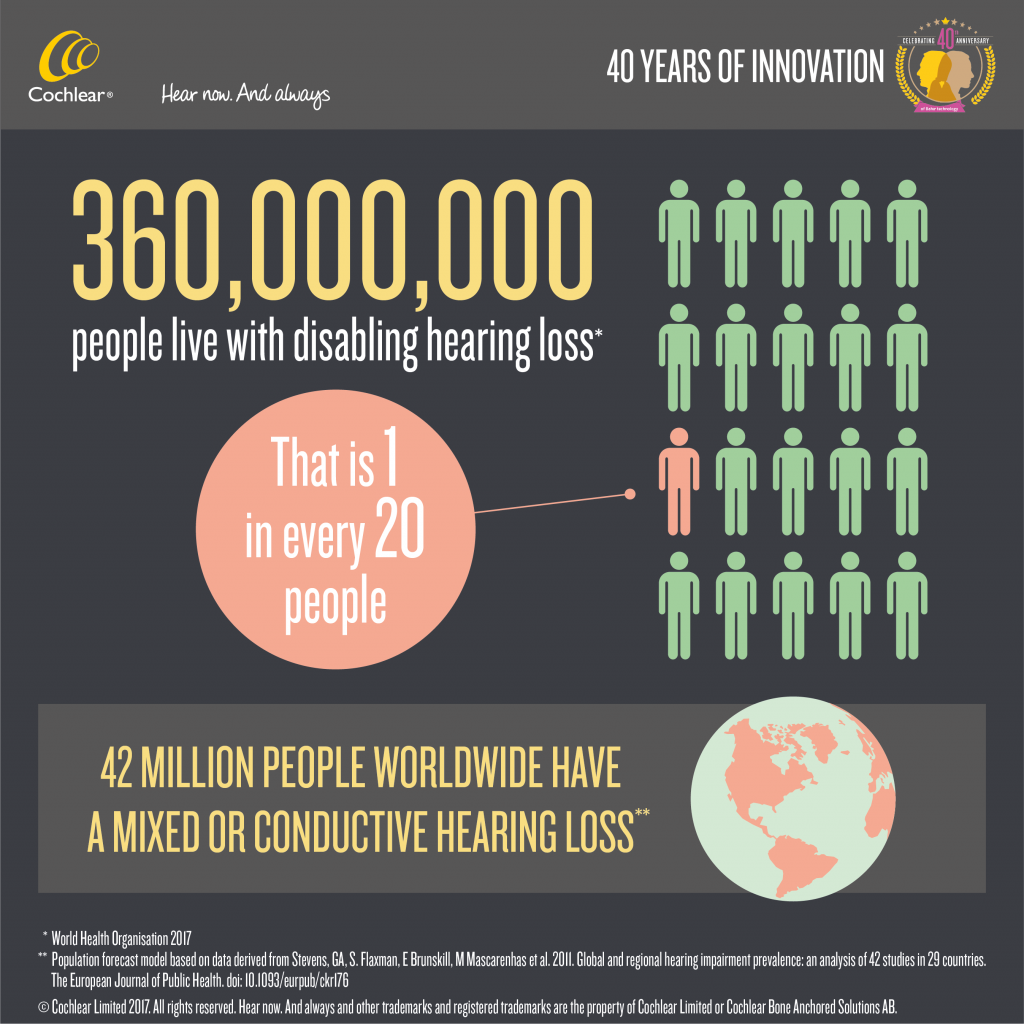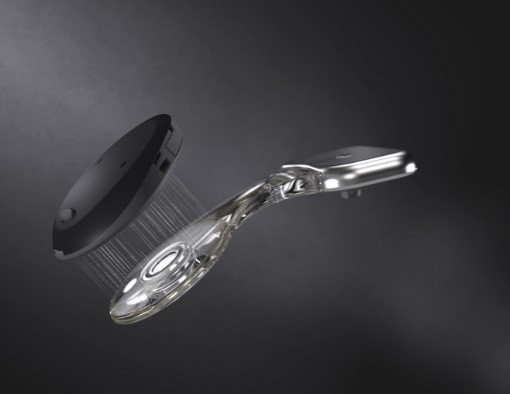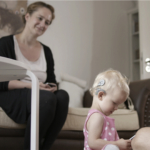Fitting a Baha® SoundArc™
The Baha® SoundArc™ System is a modern and discreet over-the-ear non-surgical solution for children and adults struggling with conductive hearing loss, mixed hearing loss or single-sided deafness (SSD). The Baha SoundArc System provides a high quality, non-surgical option for both children and adults. Children who have outgrown the Softband but are not yet ready for a surgical solution are perfect candidates for the SoundArc . It can be fit quickly and easily and can be used with any of the Baha 5 series of processors. Want more help fitting the SoundArc? This video gives clinicians the tools to correctly fit a SoundArc on their patients to maximize hearing performance:
Why is MFO important in a bone conduction sound processor?
Maximum Force Output (MFO), which is similar to Maximum Power Output (MPO) in hearing aids, defines the overall gain that can be made available to the device through the vibrating transducer. Maximum gain will be dictated by the MFO in a device and the range between these two curves is called “Headroom.”
When using a bone conduction device like a Cochlear™ Baha Sound Processor, the higher MFO figure will allow for better hearing in noise by allowing the sound processor to produce more gain for a given input. This allows the signal to be amplified above the noise and will improve the signal-to-noise ratio. The Baha 5 SuperPower has the greatest MFO available to the patient on the market today.1
Evaluating outcomes with Cochlear Baha solutions
Outcome measures are of increasing importance in healthcare today. Patients (and insurance companies) want to know they’re getting their money’s worth and want to be sure that the recommended treatment option was beneficial in a measurable way. So how can outcomes be measured with the Baha System?
For all recipients, subjective outcome measures such as the Client-Oriented Scale of Improvement (COSI) or Abbreviated Profile of Hearing Aid Benefit (APHAB) are easy to administer and helpful in assessing performance. Objective speech perception tests can also be useful – they will be set up slightly differently depending on the type of hearing loss:
-SSD: Set up the booth with noise coming to the “good” side and the speech signal coming to the “bad” side, then test with and without Baha. Any test materials that include speech in background noise can be used – the Quick Speech in Noise test (SIN), BKB-SIN and CNC are good examples. Test with and without Baha to show the benefit the Baha System provides.
-Mixed or conductive hearing loss: Set up the booth as you normally would for any sound-field speech perception testing (i.e. speech and noise through one speaker or both). Any speech perception measures can work – consider single word tests such as W-22’s or NU-6 or sentence tests in noise such as the Quick-SIN or AzBio in background noise. Test with and without the Baha System to show the benefit it provides.
Regardless of the specific tests used, both subjective and objective outcome measures are important to establish outcome status for your patients.
What is the easiest way to demonstrate hearing with a bone conduction device to a candidate?
In the clinic, with a limited amount of time, the best way to help your patients to understand what an Osia or Baha Sound Processor can do is through a demonstration or “demo” of bone conduction. A demo can be done quickly with a Softband or test rod and an attached Baha 5 Power device. The advantage of using the Baha 5 Power device is that you can adjust the volume to the most comfortable loudness for a given patient. For conductive hearing loss and SSD patients, it might be best to increase the volume on the Baha 5 Power to provide that extra gain beyond the default (i.e. “out of box”) settings. If desired and if time permits, the sound processor can be customized and fit for the patient using the Baha System fitting software. If the device is set for an individual, be sure to reset the sound processor to the factory settings for any subsequent patients.

The best demos are done in real world situations where there is speech and noise present and the candidate may contrast their hearing with and without the device turned on. A more formal evaluation can be done with the use of a pre-recorded speech test like the Quick-SIN or the BKB-SIN presented in a calibrated sound field.
Remember that this type of demonstration is NOT an exact prediction of how someone will do after surgery, especially for the Osia System. Research shows that hearing thresholds with the Osia System will be better in the high frequencies than hearing with Baha on a Softband, but the demo can be a useful counseling tool to help a candidate understand what the bone conduction hearing experience.2
Baha 5 smart app FAQs
What is my patient adjusting when using the volume slider in the Baha 5 Smart App?
A: When using the volume slider in the Baha 5 Smart App the patient is adjusting the sound processor microphone level, which is the volume level of your surroundings. To adjust the wireless accessory volume, change to a wireless accessory program and a separate volume bar will appear in the app.
Can my patient use the Baha 5 Smart App to adjust sound processor volume during phone calls or while streaming audio?
A: Yes, they can adjust the sound processor volume by turning the volume slider up and down in the Baha 5 Smart App. Also, if a patient has an Apple® device and would like to adjust the volume of the phone call or the streamed audio, they can use the hard keys or volume rocker of the side of the smartphone.
If the volume rocker on the Baha 5 Power sound processor is disabled, can my patient adjust volume using the Baha 5 Smart App?
A: Yes, they can adjust the volume of the sound processor using the volume slider in the Baha 5 Smart App even if the volume rocker on the Baha 5 Power Sound Processor is disabled.
How does ‘add location’ actually work?*
A: Once they have created a Program+ they can choose to link it to a specific location. After arriving at the location, the app will ask if the user wishes to switch to the linked Program+. The same Program+ can be linked to several locations.
How many locations can my patient add?*
A: They can add up to 20 locations. These 20 unique locations can be distributed among your Program+. For example, they can use all 20 for the same Program+, or 1 location for 20 Program+.
What does the treble and bass adjust?
A: Adjusting treble and bass allows your patients to customize their hearing experience. The treble/bass can be adjusted by +6 dB to -6 dB where each step equals a change of 1dB. The cross-over frequency between low frequency (bass) and high frequency (treble) adjustment is 1000Hz.
With the Baha 5 Smart App your patients can:
1) Quickly and easily change programs, activate streaming and adjust the volume
2) Adjust treble and bass to customize their sound processor settings
3) Receive assistance and get handy operating tips and
4) Locate a lost or misplaced sound processor
*iOS only
For more information, subscribe to the revamped Cochlear ProNews or check out these AudiologyOnline resources.
References:
- Professional Marketing Department. (2018, February 28). Cochlear Americas. Retrieved from https://pronews.cochlear.com/mpo-available-to-the-patient/
- Data on file Windchill Document D147847
Cochlear™ Baha 5 sound processors are compatible with iPhone®, iPad® and iPod touch®. The Cochlear Baha 5 Smart App is available on App Store and Google Play. For compatibility information visit www.cochlear.com/compatibility
App Store is a service mark of Apple Inc., registered in the U.S. and other countries. Apple, the Apple logo, FaceTime, Made for iPad logo, Made for iPhone logo, Made for iPod logo, iPhone, iPad Pro, iPad Air, iPad mini, iPad and iPod touch are trademarks of Apple Inc., registered in the U.S. and other countries.









